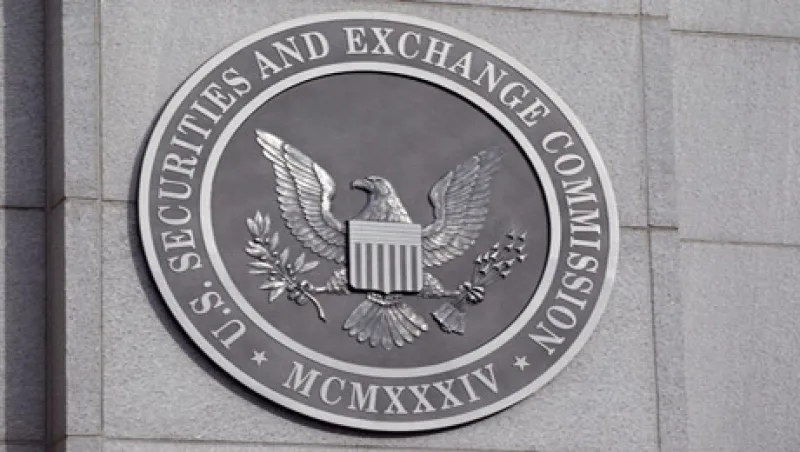Pressure is mounting for the Securities and Exchange Commission to force investors to report more quickly when they buy 5 percent or more of a company’s stock.
Last week the law firm Wachtell, Lipton, Rosen & Katz published an article in the New York Law Journal repeating its case for reducing the number of days in which an investor must file a Schedule 13D from the current 10 days after scooping up at least 5 percent of a company’s stock. It also wants the SEC to broaden its definition of “beneficial ownership” to address sophisticated derivative strategies such as swaps, which it feels have been used to circumvent the rules.
Wachtell, Lipton, widely known as the firm that invented the poison pill defense several decades ago, stated in the article that the SEC is scheduled to issue a Concept Release later this spring addressing the concerns raised by the law firm a year ago.
Not so fast, warns an SEC spokesman. Lona Nallengara, deputy director of the SEC’s Division of Corporation Finance, says he is hoping to publish a Concept Release by the end of the year. This means Final Rules are not possible until more than a year from now. “We have been considering the topic of beneficial ownership reporting for some time,” he stresses. “We have been focused on our Dodd-Frank rulemaking, but, subject to the Commission calendar, we expect to have our Concept Release out later this year.”
There are basically two issues here — the 10-day window and the beneficial ownership rules.
Those seeking change, such as Wachtell, Lipton, argue that 10 days is too much time to give an activist investor to announce to the world that it owns at least 5 percent of a company’s stock in this age of computerized trading, electronic filing, and the instant dissemination of material information.
“Potential acquirers can (and do), under the current regime, acquire just under 5 percent of a company’s shares, wait until all of their preparations are complete, and then aggressively cross the threshold and quickly acquire a large amount of additional shares before 10 days elapse and public disclosure is provided,” the law firm asserts.
Wachtell, Lipton also believes the current definition of "beneficial ownership" allows many sophisticated investors to avoid current reporting requirements. Critics like to point out that in 2010, in the 10-day window after buying up more than 5 percent of J.C. Penney, Bill Ackman’s Pershing Square Capital Management and Steven Roth’s Vornado Realty Trust brought their combined holding up to about 27 percent prior to filing their 13D using open-market purchases, forward purchases, call options and total return swaps. These moves permitted them “to acquire the stock at a substantially lower price from unwitting shareholders than would have been possible with stricter disclosure rules,” Wachtell, Lipton insists.
Other noted shareholder rights advocates disagree, however. Lucian Bebchuk, professor of law, economics, and finance at Harvard Law School, and Robert Jackson, Jr., associate professor of law at Columbia Law School, think that large blockholders are actually good for investors, since they make directors and managers more accountable. In a letter submitted to the SEC last July, they said that the proposed changes should be examined “in the larger context of the beneficial role that outside blockholders play in American corporate governance and the broad set of rules that apply to such blockholders.”
They insist empirical evidence indicates shareholders benefit from the accumulation and holding of outside blocks in public companies because it makes incumbent directors and managers more accountable. They also argue there is currently no empirical evidence to support claims that changes in trading technologies and practices have led to a significant increase in predisclosure accumulations of ownership stakes by large outside shareholders.
“We conclude by recommending that the Commission to pursue a comprehensive examination of the rules governing outside blockholders and the empirical questions raised by our analysis,” the two academics write. “In the meantime, the Commission should not adopt new rules that tighten restrictions on outside blockholders. Existing research and available empirical evidence provide no basis for concluding that tightening the rules governing outside blockholders would satisfy the requirement that Commission rulemaking protect investors and promote efficiency, and indeed raise concerns that such tightening could harm investors and undermine efficiency.”
Given the clear-cut division over the issue, it is not surprising the SEC is moving slowly. And the process is unlikely to get any quicker.
The Concept Release — due out by year-end — will ask a series of questions to all of the interested parties and seek comments. It is a detailed document that will lay out the issues and the history and will break down all parts of the review conducted by the SEC group.
Then it will allow time to await comment letters — typically 60 days — which in turn must be reviewed. The topic will most likely result in a large volume of these comments. It also would not be surprising if the SEC then conducted a roundtable discussion of interested parties, as it has done in recent years when there is strong interest in a major issue.
In any case, customarily, once The Division of Corporation Finance review comments on the Concept Release, the staff would use that as a basis to make recommendations to the Commission for consideration in a proposing release. This would once again generate comments, then recommendations for the Commission to consider for adopting release.
The entire process could take nearly two years.







